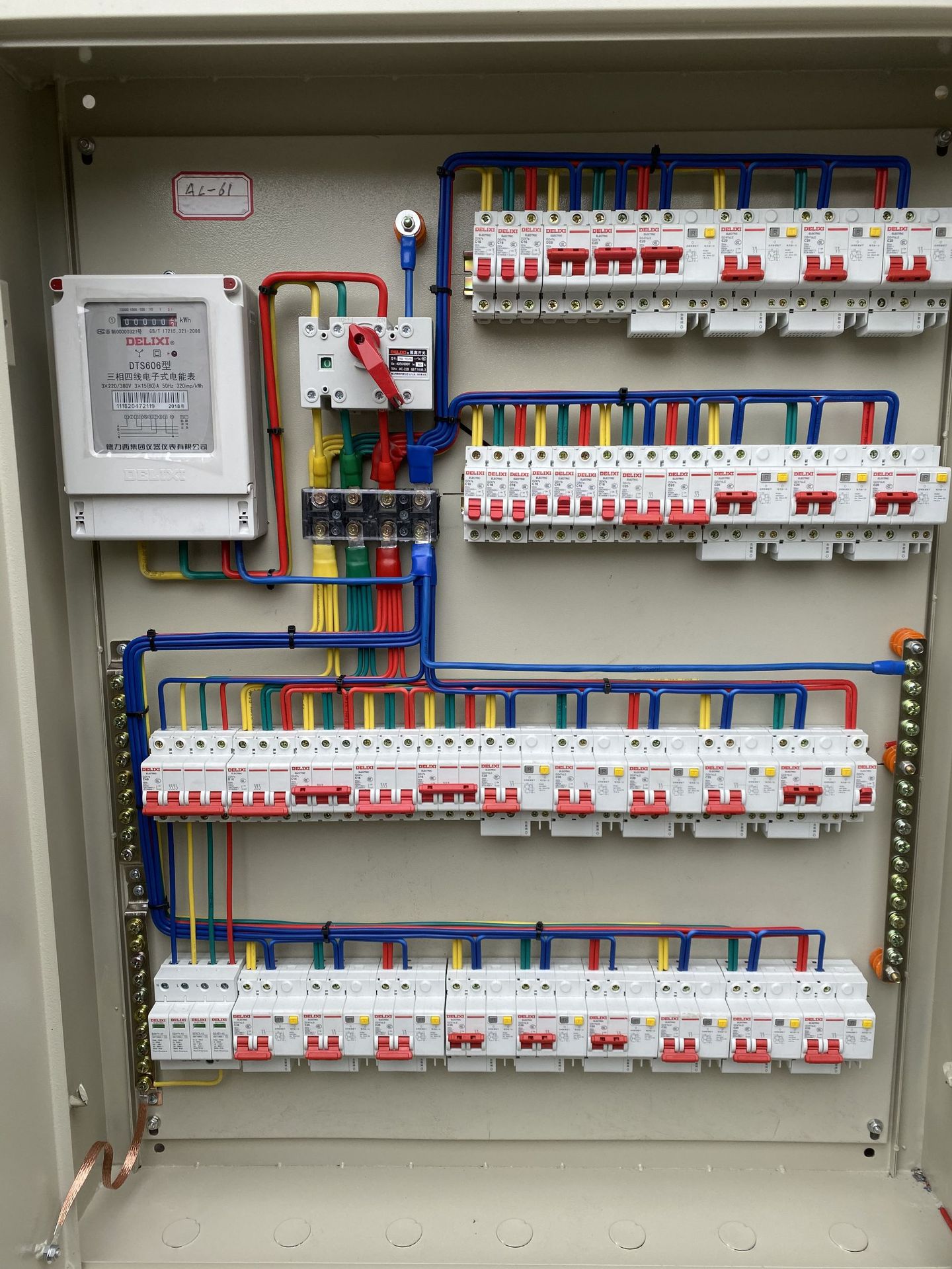How to deal with the leakage of the household distribution box?
 The leakage of the household distribution box is a common electrical safety hazard and
The leakage of the household distribution box is a common electrical safety hazard and
needs to be investigated and dealt with in a timely manner. The following are the step-
by-step handling methods:
I. Cut off the power immediately to ensure safety
1. **Cut off the main power supply**
Turn off the **main circuit breaker (air switch)** in the distribution box and unplug all
electrical plugs to prevent electric shock or the expansion of a short circuit.
2. **Check the Residual Current Device (RCD)**
- If the RCD trips (the button pops out), press the **reset button** and then close the
switch:
- If it trips again after closing the switch: It indicates that there is a leakage problem,
and it is necessary to conduct an investigation.
- If the switch is successfully closed: It may be a transient leakage (such as a wet
electrical plug), and you can test by plugging in the electrical appliances one by one.
II. Steps for investigating leakage
1. Distinguish the leakage area
- **The method of cutting off the power of each branch circuit**:
Turn off each branch circuit breaker (such as lighting, sockets, air conditioners, etc.) one by one. After closing the switch each time,
observe whether the main RCD trips to locate the leakage circuit.
YouTube:https://youtube.com/shorts/2cYDKYBJrsc
2. Test the leakage of the circuit
- **Use a multimeter**:
Set it to the **resistance range (Ω)**, disconnect all the loads of this circuit (turn off the electrical appliances), and measure the
resistance between the **live wire and the ground wire, and the neutral wire and the ground wire**:
- If the resistance is 0 or close to 0: There is a leakage in the circuit (the insulation may be damaged).
- If the resistance is normal (> 0.5MΩ): Check the load equipment.
3. Check the electrical equipment
- Test the electrical appliances by plugging them in one by one, and focus on investigating:
- **Equipment in a humid environment** (such as washing machines, water heaters).
- **Old electrical appliances** (aging of the circuit).
- **Equipment with a metal shell** (it is prone to leakage when not grounded).
III. Common causes of leakage and solutions
1. Aging of the circuit or damage to the insulation
- **Phenomenon**: The outer skin of the circuit becomes brittle and cracked, and there are electric sparks when touched.
- **Solution**:
① Cut off the damaged section and wrap it in layers with **insulating tape** (at least 3 layers).
② If there are multiple damaged sections, **replace the entire wire** (it is recommended to call an electrician).
2. Loose connection terminals
- **Phenomenon**: The wire terminals in the distribution box are hot and charred.
- **Solution**:
① After cutting off the power, tighten the terminal screws with a **screwdriver**.
② Remove the oxide layer and apply **conductive paste** to prevent oxidation.
3. Ground wire failure
- **Phenomenon**: The metal shell of the electrical appliance is electrified, and the RCD trips.
- **Test the ground wire**:
Use the **voltage range** of the multimeter to measure the voltage between the **live wire and the ground wire** of the socket.
It should be **220V** normally. If it is 0V or lower, it indicates that the ground wire is disconnected.
- **Solution**:
Check whether the ground wire busbar in the distribution box is loose, or reconnect the ground wire (it needs to be reliably
connected to the incoming ground wire).
4. Failure of the RCD
- **Phenomenon**: It trips frequently by mistake and also trips when there is no leakage.
- **Test**:
Press the **test button** of the RCD, and it should trip normally; if it does not trip, it indicates that the protector is damaged.
- **Solution**: **Replace the RCD with the same specification** (pay attention to the rated current and pole number).
IV. Precautions for safe handling
1. **Operation must be carried out after cutting off the power**, and it is prohibited to touch the circuit while it is live.
2. In a humid environment (such as the bathroom), **waterproof electrical tape** should be used to avoid secondary leakage.
3. If it involves the leakage of **concealed wiring** (inside the wall, underground), it is necessary to chisel open the wall for inspection,
and it is recommended to contact a professional electrician.
4. The ground wire must be **laid separately**, and it is prohibited to mix it with the neutral wire.
V. Preventive measures
1. **Regular inspection**: Conduct a comprehensive inspection of the insulation of the circuit and the tightness of the terminals
every 2 years.
2. **Install an RCD**: It is recommended to install a **2P+N RCD** (such as Chint DZ47LE-63) for both the main switch and the
socket circuit.
3. **Moisture-proof treatment**: Use a **waterproof distribution box** in areas such as the bathroom and kitchen, and protect the
circuit with pipes.
**Reminder**: If it is difficult to investigate by yourself or it involves complex circuits, **be sure to contact a licensed electrician**
for handling to avoid the risk of electric shock!


